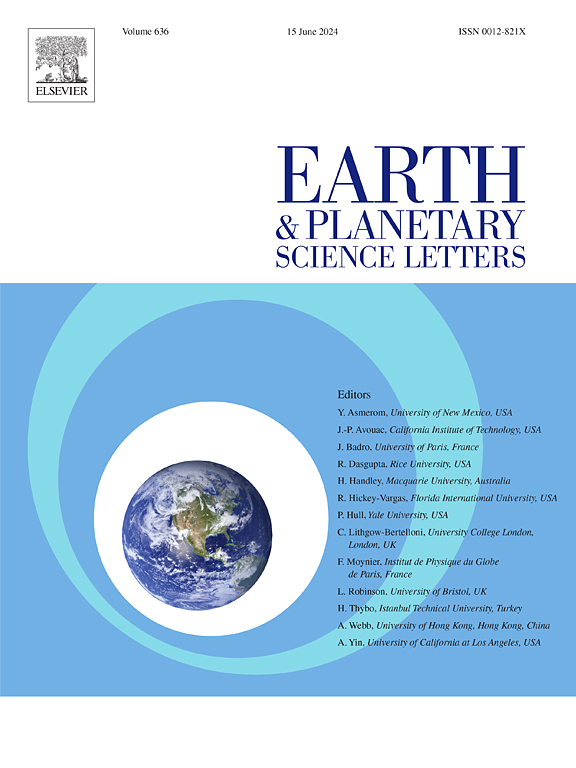Uncovering the xenon isotope composition of continental rift magmas: Insight from analysis of geothermal gases at Homa Hills, Kenya
IF 4.8
1区 地球科学
Q1 GEOCHEMISTRY & GEOPHYSICS
引用次数: 0
Abstract
We investigated geothermal gases from Homa Hills, a carbonatitic complex situated along an adjacent branch of the Kenyan rift system, using neon, argon, krypton, xenon and nitrogen isotopes. Large quantities of gas were sampled in Giggenbach-type bottles (Giggenbach, 1975) and analyzed by dynamic mass spectrometry to resolve isotopic variations at high precision (0.01-0.1‰; Seltzer and Bekaert, 2022; Bekaert et al., 2023; 2024). Neon and nitrogen isotope compositions are consistent with parental magmas being derived from the convecting mantle. Xenon isotopic data present ubiquitous enrichments (relative to air) of 129Xe from the decay of extinct 129I (T1/2 = 15.7 Myr) and 131-136Xef from fissions of 238U (T1/2 = 4.468 Myr) and/or 244Pu (T1/2 = 82 Myr). We also find slight excesses of 128Xe (relative to 130Xe and air), which could be due to subsurface isotopic fractionation during e.g., diffusive transport fractionation (DTF) and gravitational settling. However, the 128Xe excesses are not accompanied by correlated Kr isotope excesses and plot off the empirical fractionation line defined from several other locations worldwide (Bekaert et al., 2023). Instead, a detailed isotope deconvolution suggests the occurrence of either chondritic Xe (with mantle 130Xe consisting of up to 22 % of chondritic 130Xe) or recycled Xe from the Archean atmosphere could explain the observed Xe isotope signatures. The latter possibility would have profound implications for models of mantle-surface exchange throughout Earth history.
The fission spectra indicate a predominantly 238U origin for fissiogenic Xe, with contribution of 244Pu-derived Xe being negligible within uncertainties, implying extensive mantle degassing during the Hadean and Archean eons. The 129Xe*/136Xe* ratio (where * indicates non-atmospheric excesses of Xe isotopes) of Homa Hills samples correlates with other tracers of mantle/crust contributions such as He, Ar and N isotopes. Variations in 129Xe*/136Xe* among the different gases sampled at Homa Hills is mainly the result of contribution from fissiogenic Xe produced in uranium-rich crustal material. Therefore, this ratio may constitute a robust tracer of mantle-crust interactions. Given available high precision data (Bekaert et al., 2023; 2024; this work) together with mantle-derived rock data, 129Xe*/136Xe* appears homogenous in the convecting mantle, and comparable to values observed at mantle plumes. Such homogeneity is in sharp contrast with light noble gas systematics and may call for whole mantle convection and a core origin for He and Ne..
求助全文
约1分钟内获得全文
求助全文
来源期刊

Earth and Planetary Science Letters
地学-地球化学与地球物理
CiteScore
10.30
自引率
5.70%
发文量
475
审稿时长
2.8 months
期刊介绍:
Earth and Planetary Science Letters (EPSL) is a leading journal for researchers across the entire Earth and planetary sciences community. It publishes concise, exciting, high-impact articles ("Letters") of broad interest. Its focus is on physical and chemical processes, the evolution and general properties of the Earth and planets - from their deep interiors to their atmospheres. EPSL also includes a Frontiers section, featuring invited high-profile synthesis articles by leading experts on timely topics to bring cutting-edge research to the wider community.
 求助内容:
求助内容: 应助结果提醒方式:
应助结果提醒方式:


